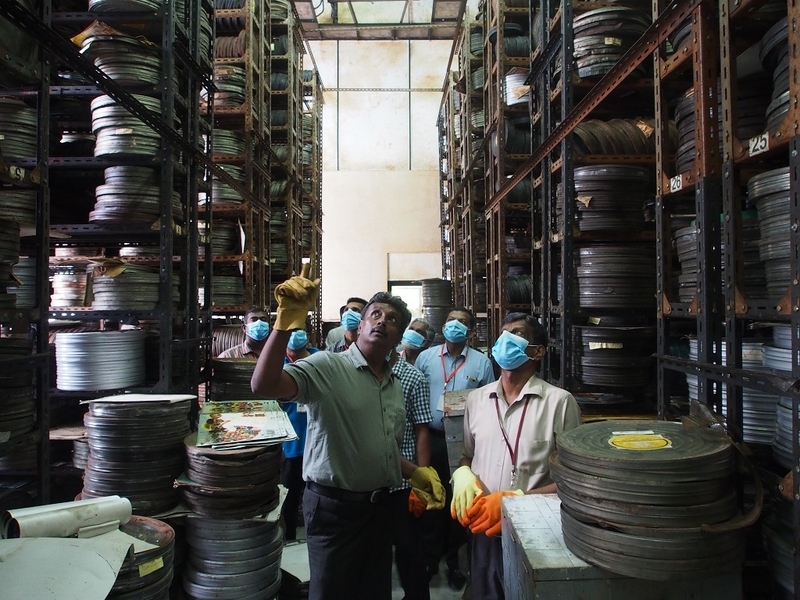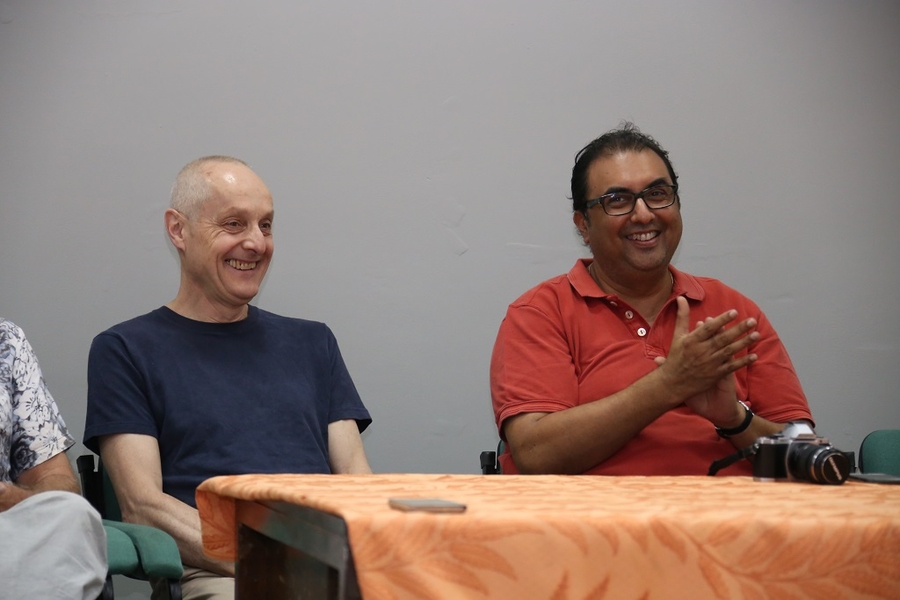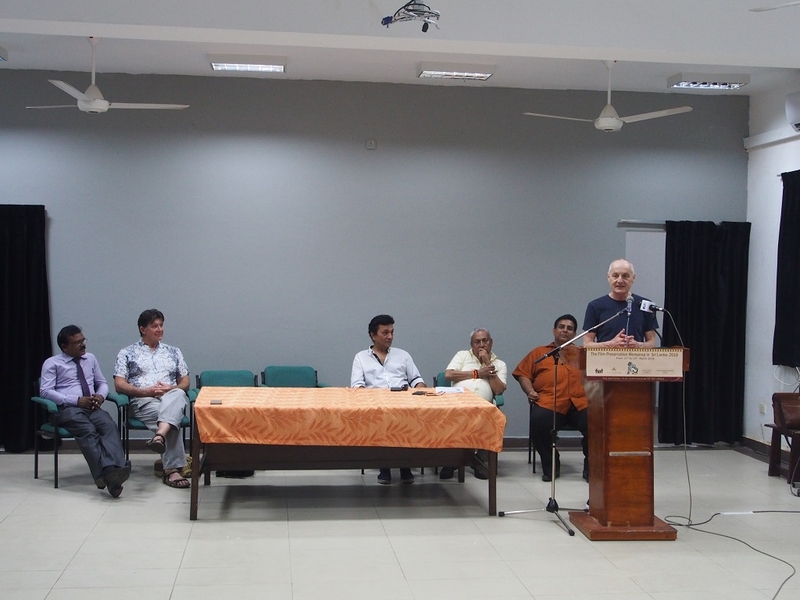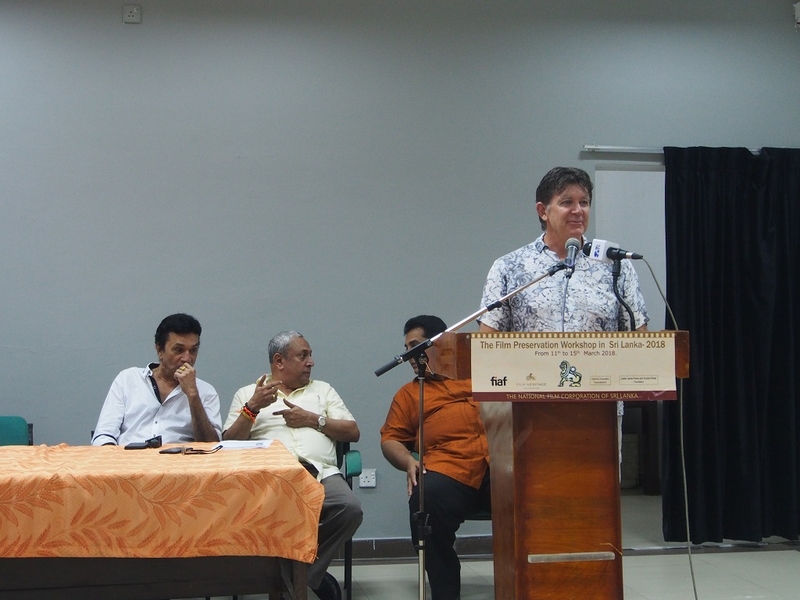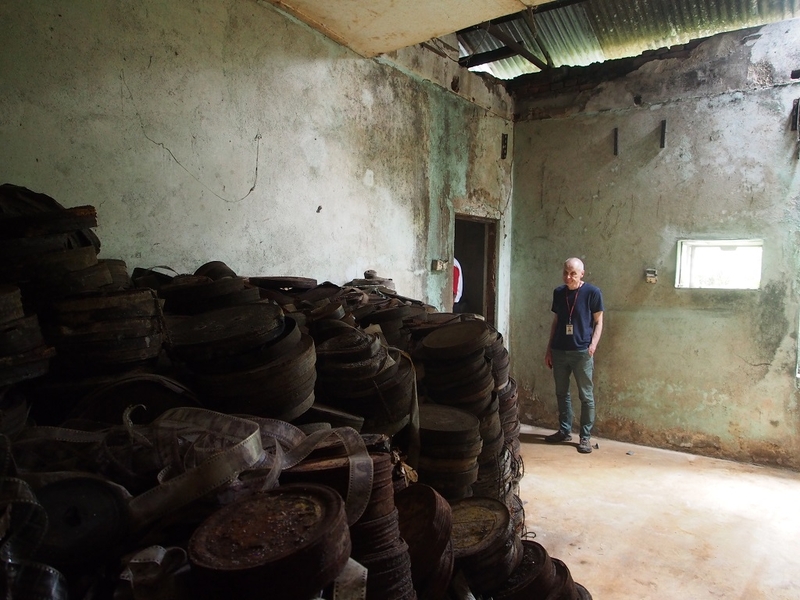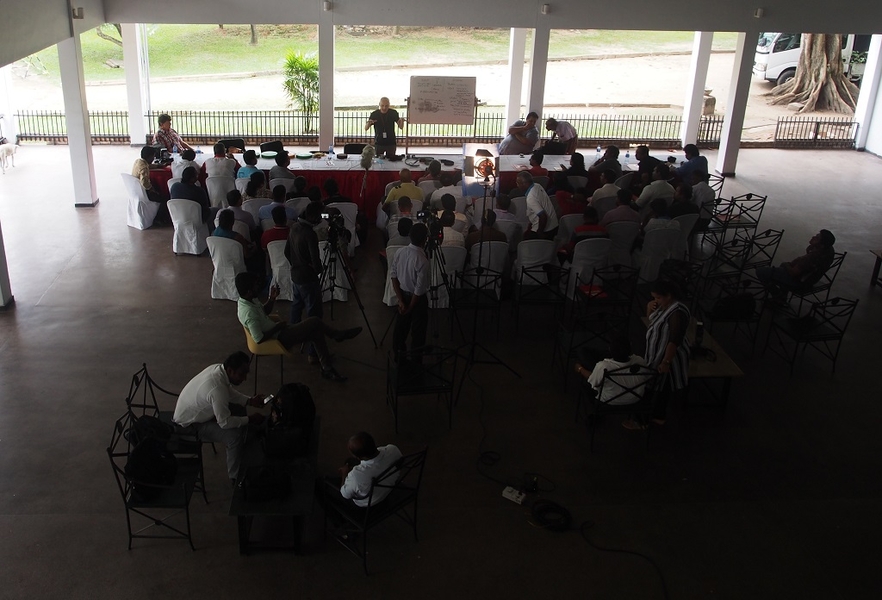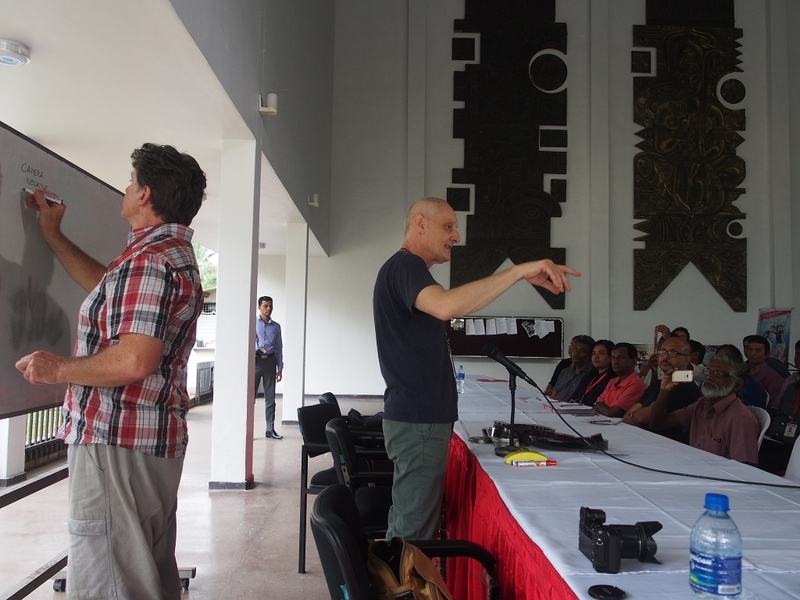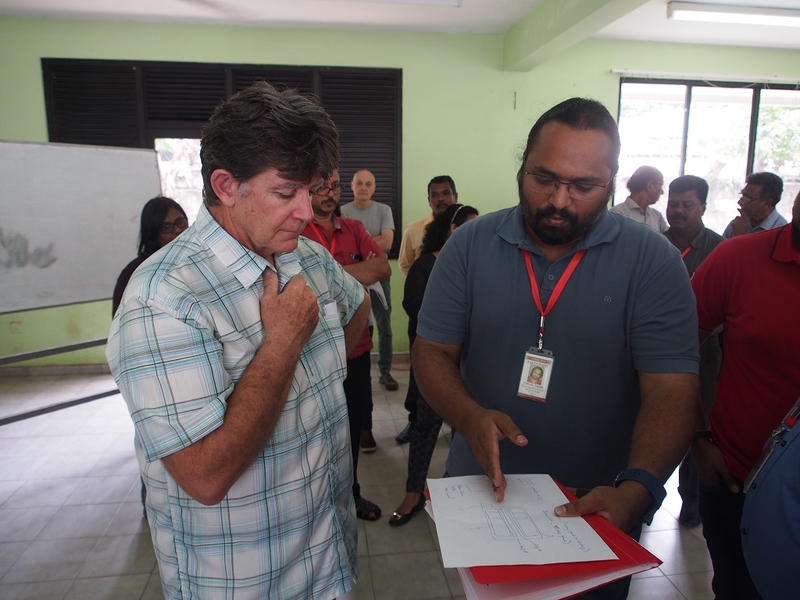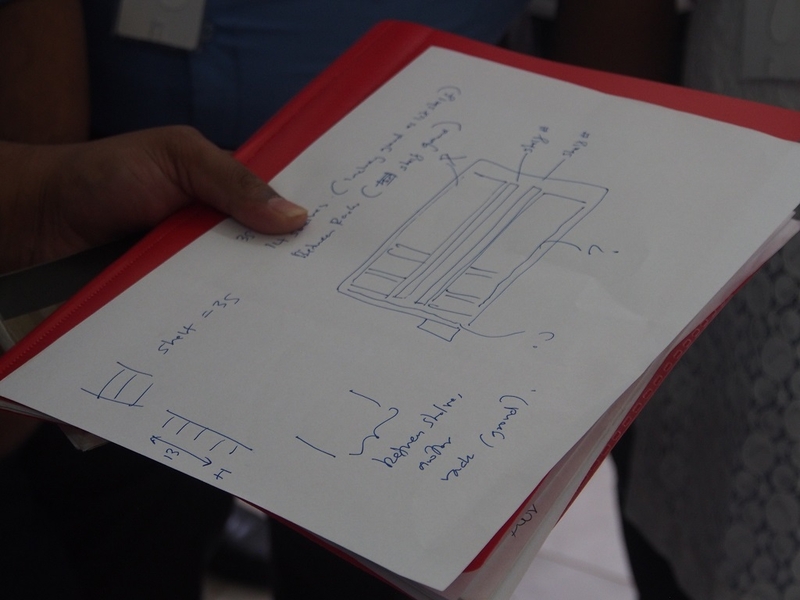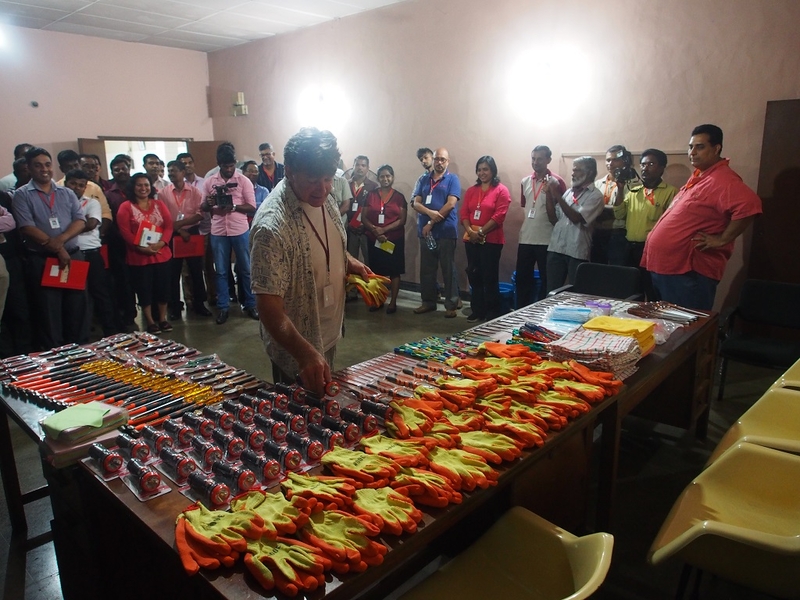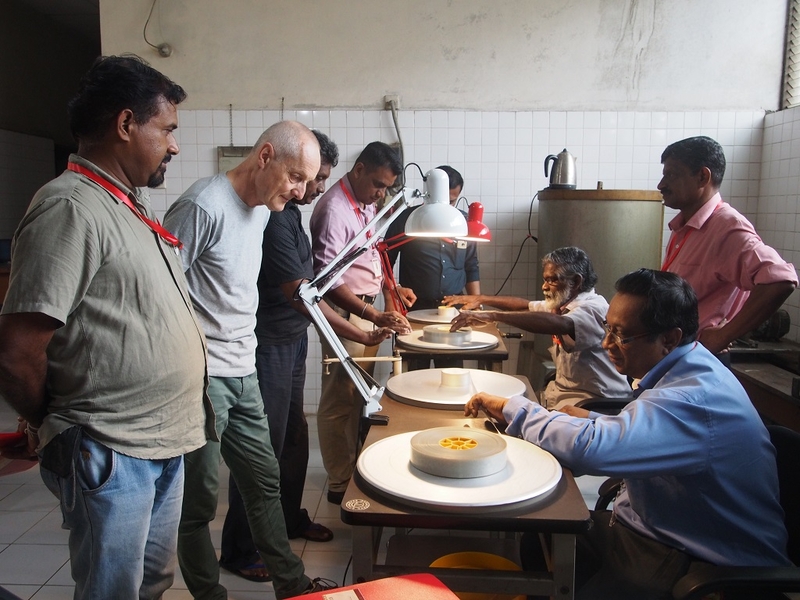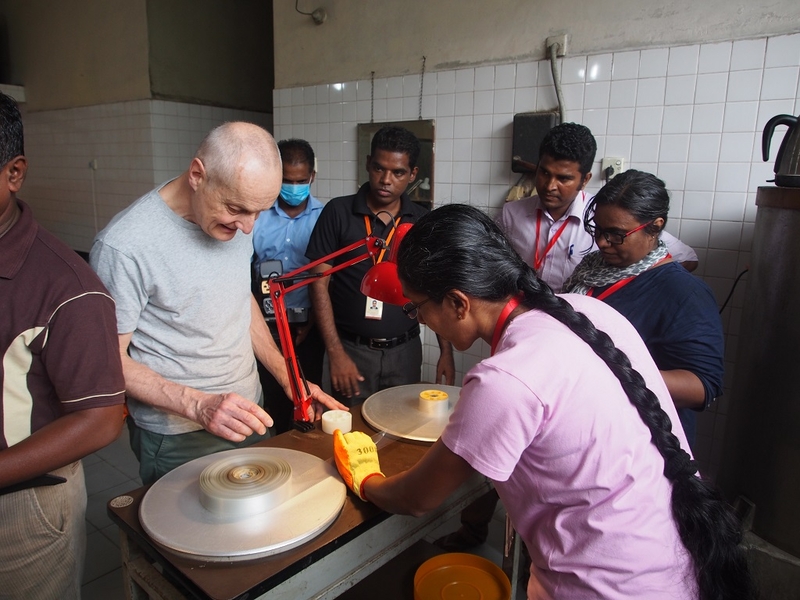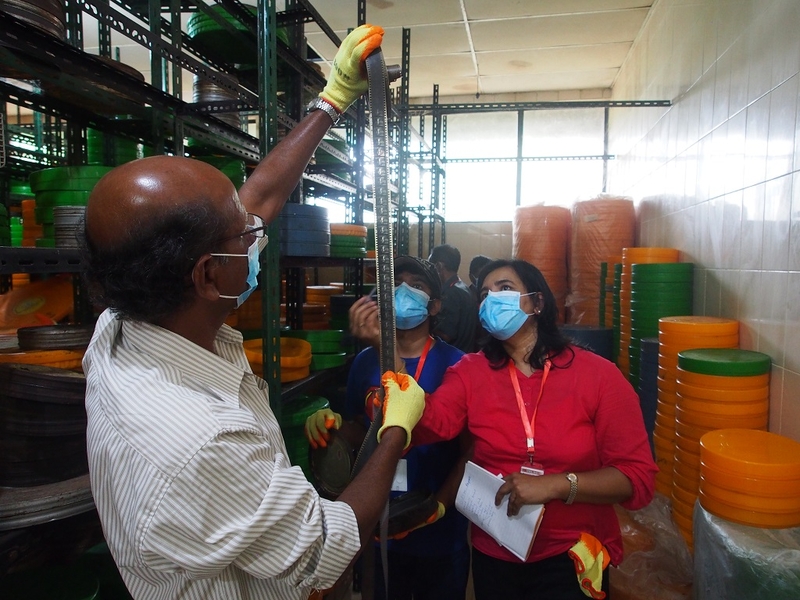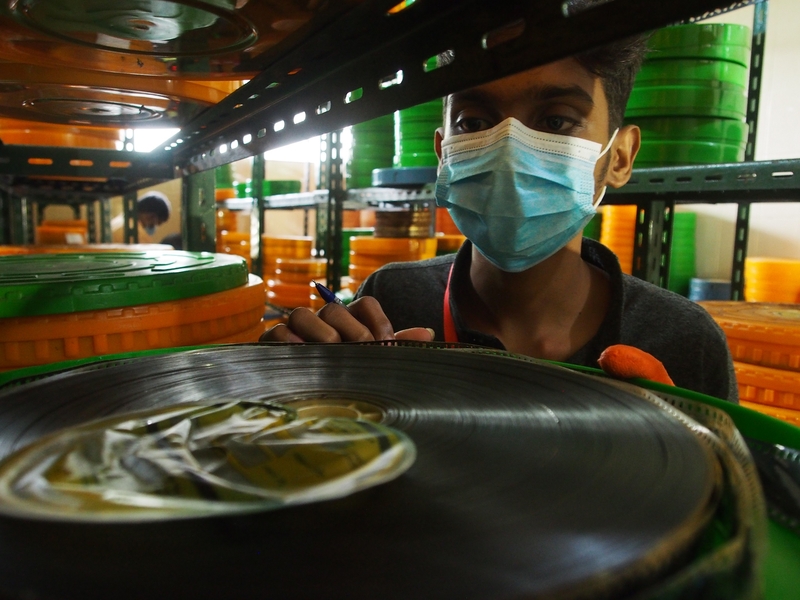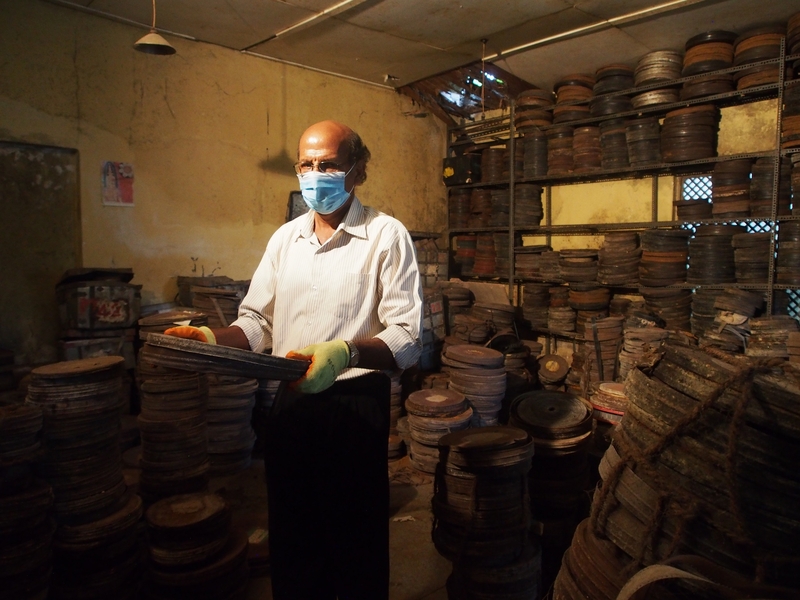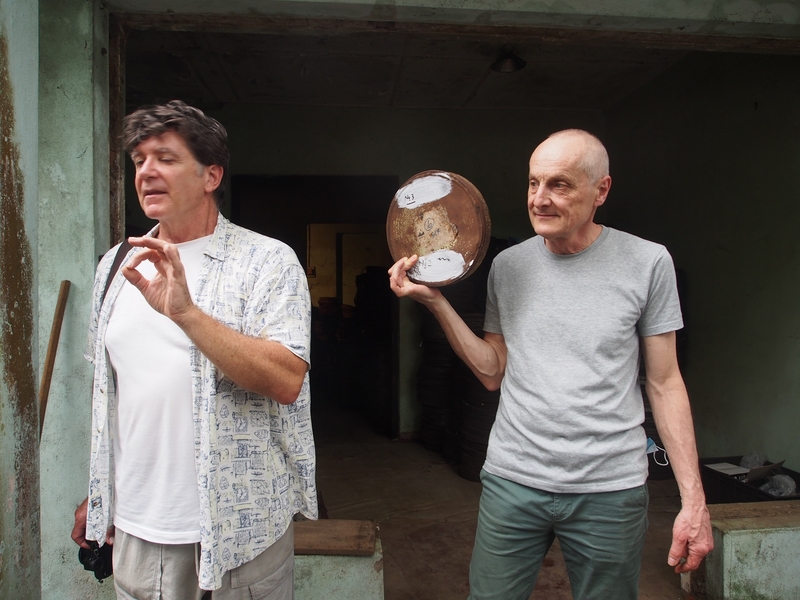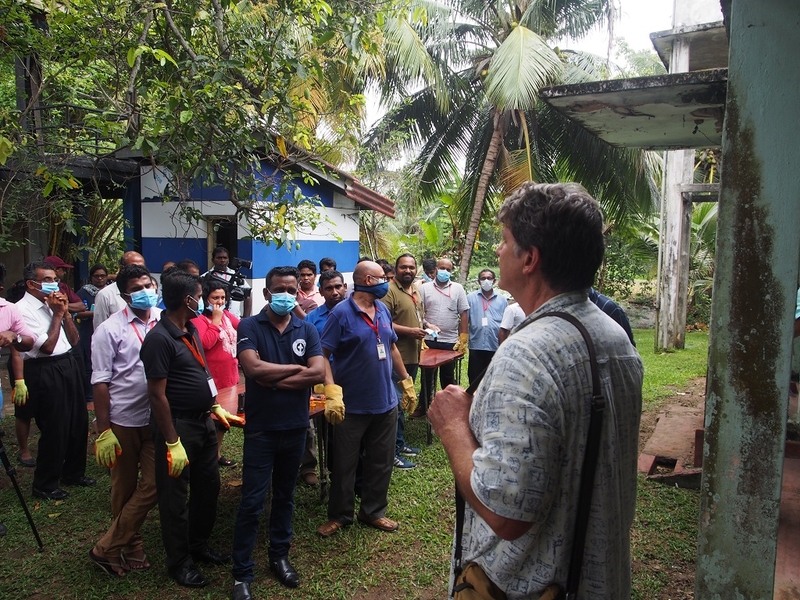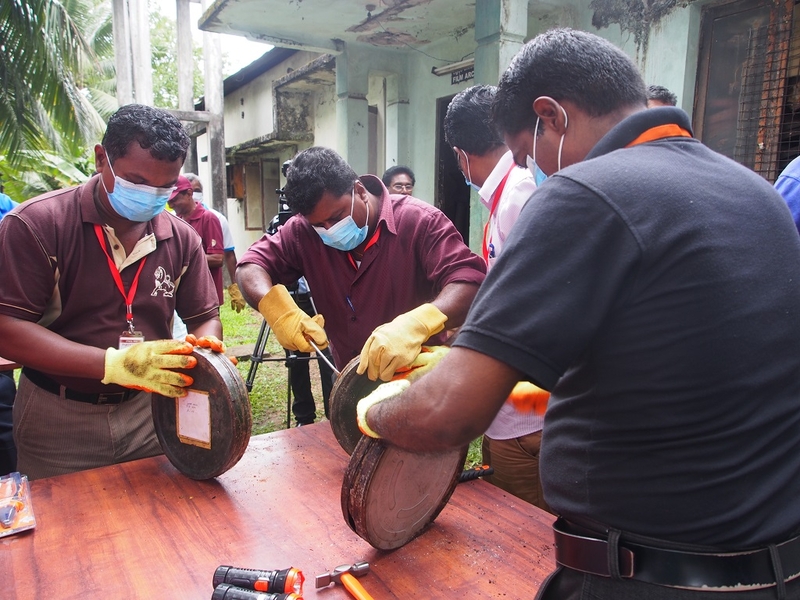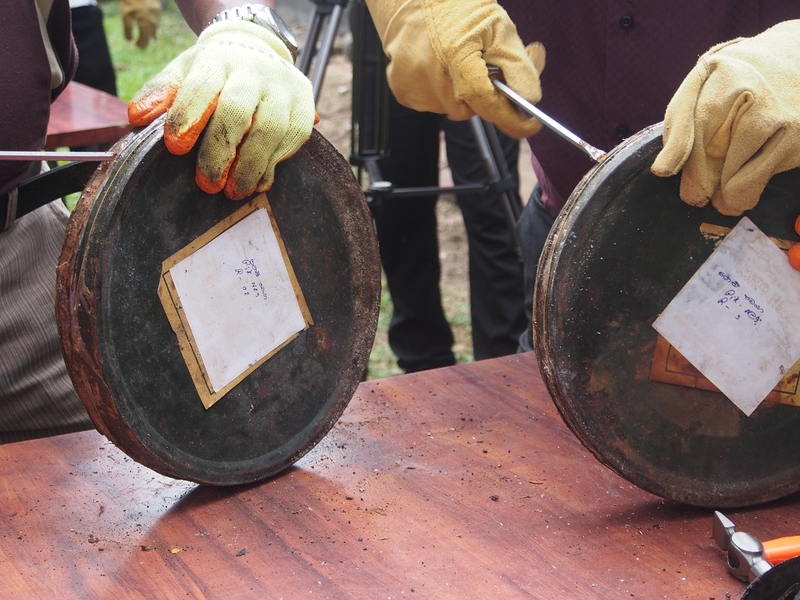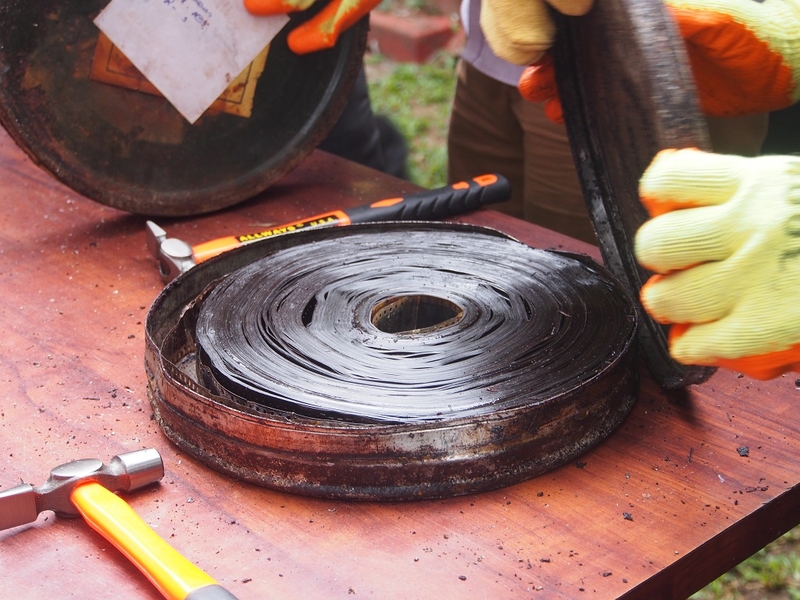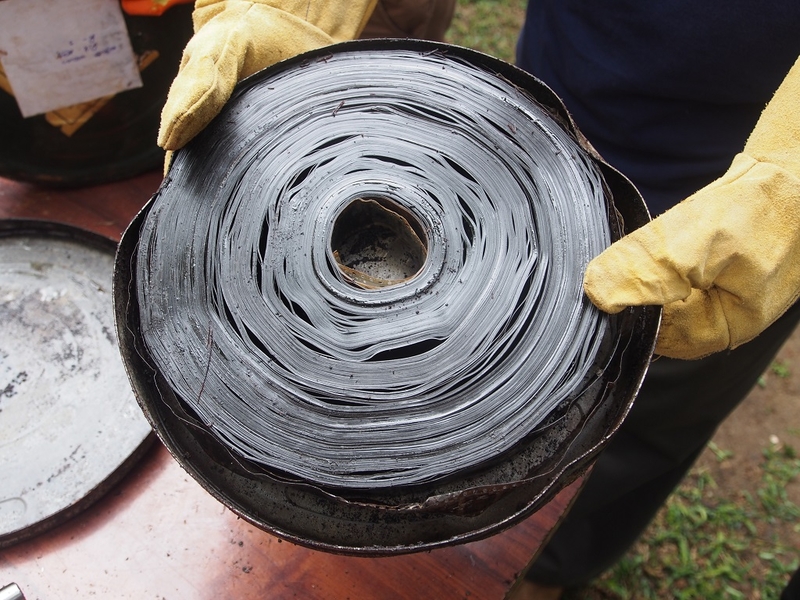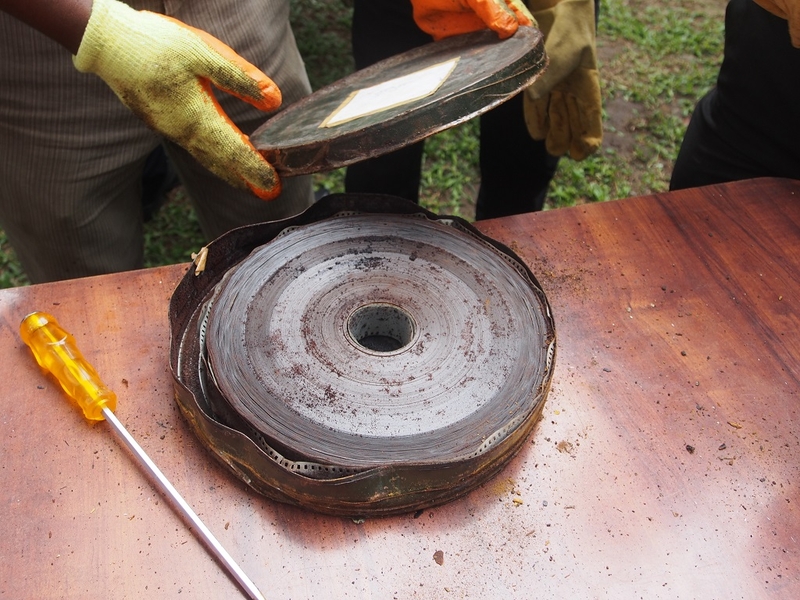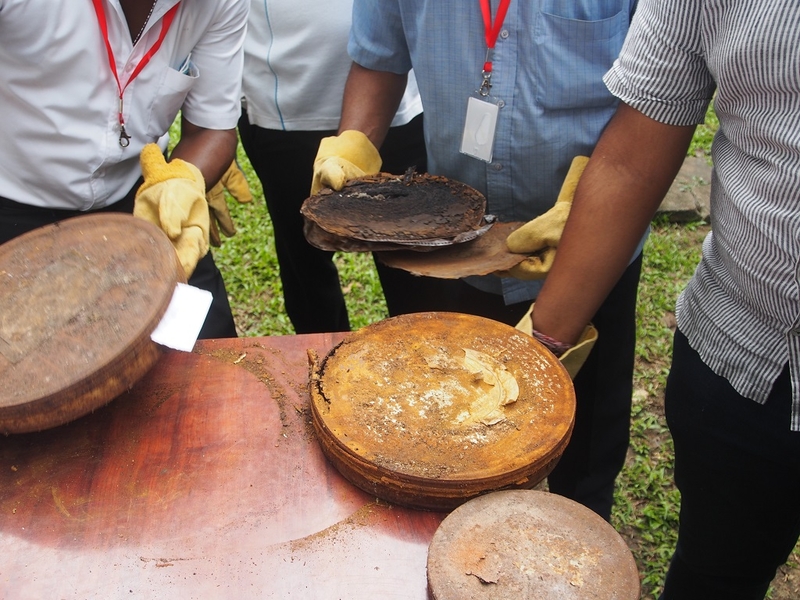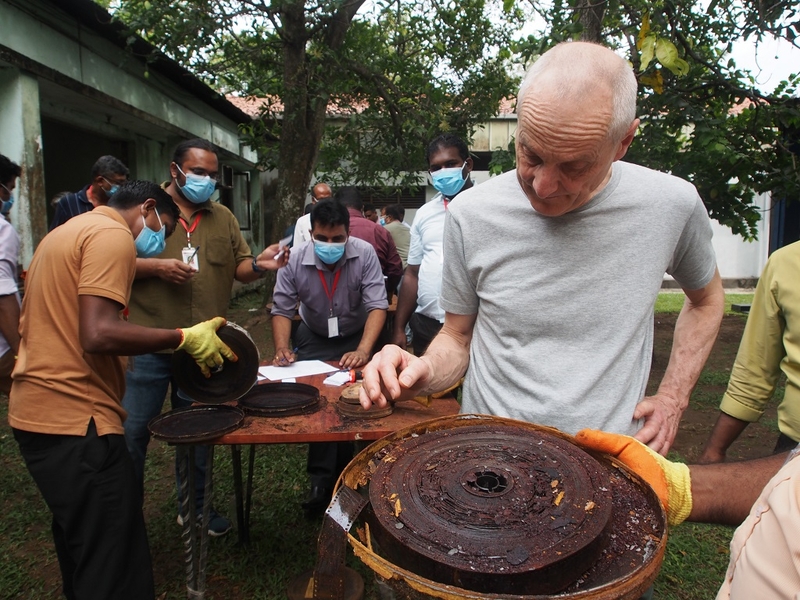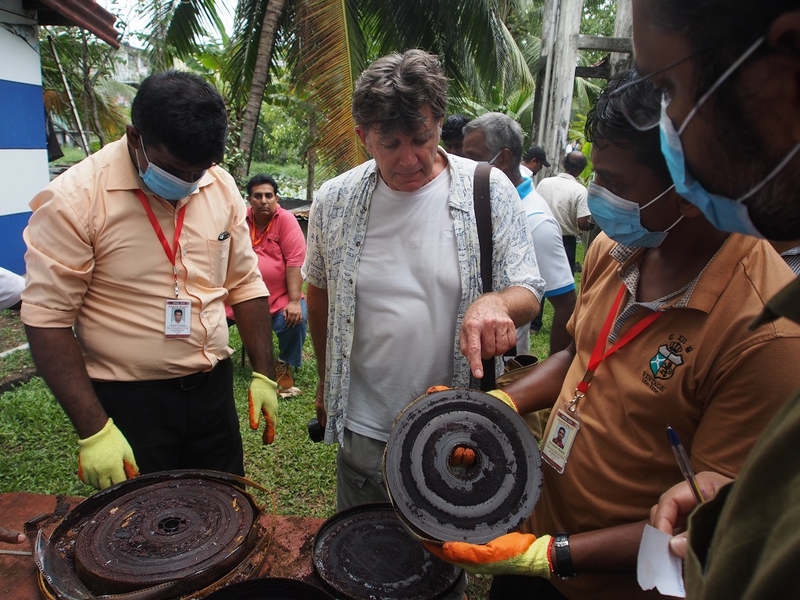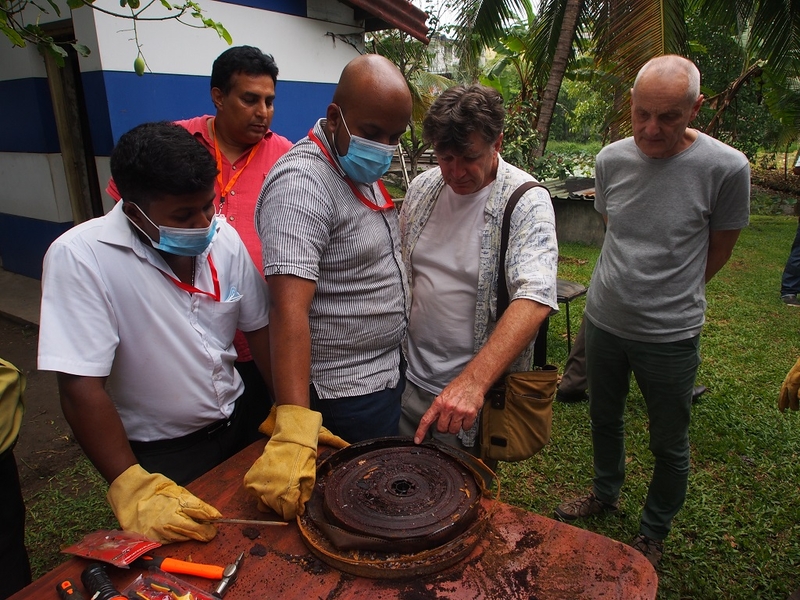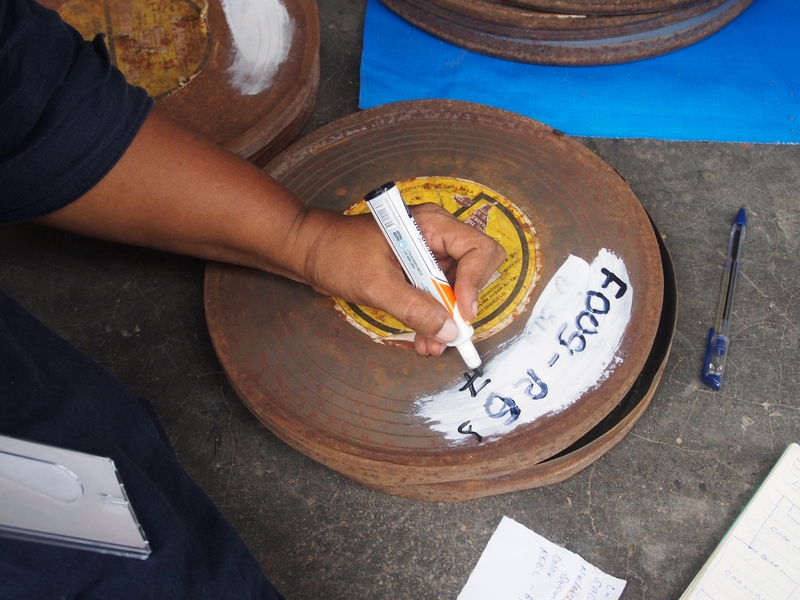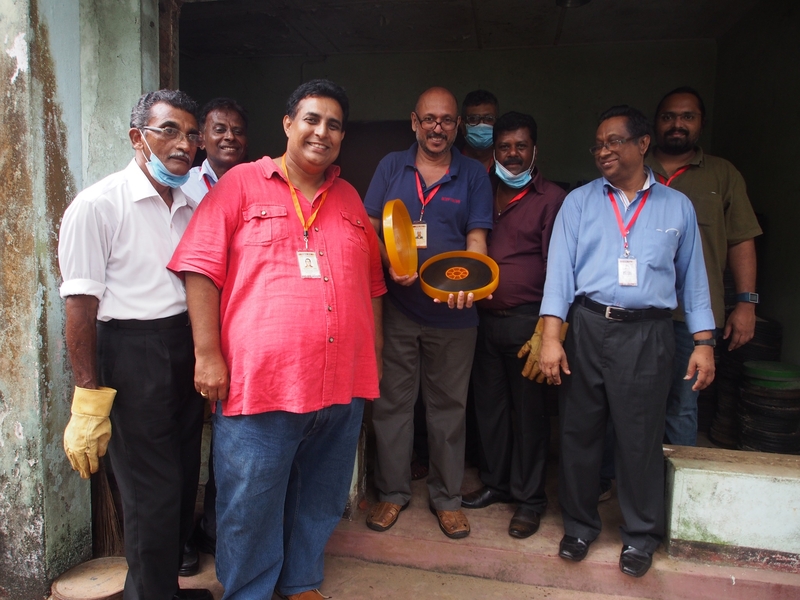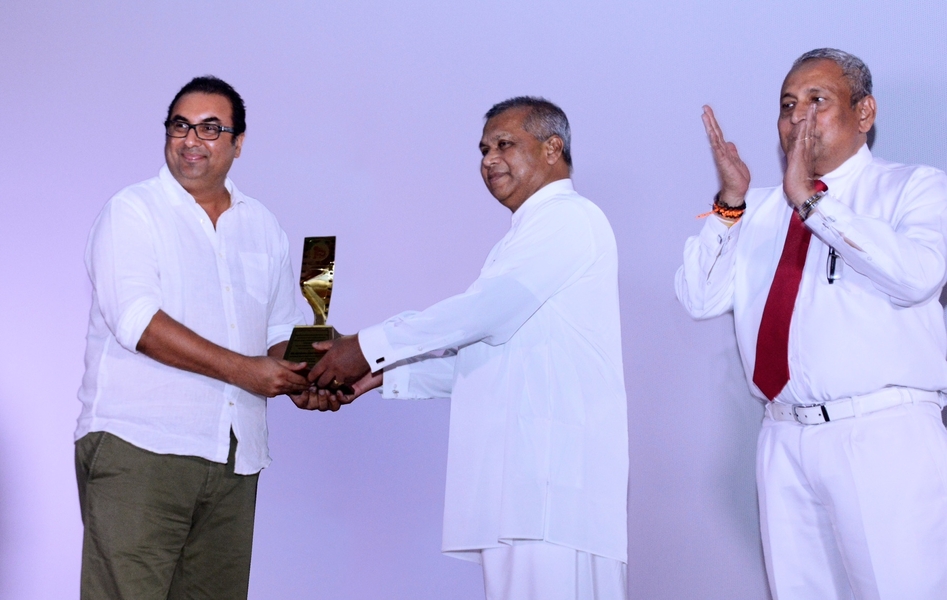How the Sri Lanka story began
Film Heritage Foundation’s relationship with Sri Lanka began three years ago when Dammith Fonseka, son of the legendary Sri Lankan actor Gamini Fonseka attended our first Film Preservation and Restoration School India in Mumbai in 2015 on a FIAF scholarship. Dammith was interested in learning how to save his father’s legacy for posterity and given that film preservation was non-existent in Sri Lanka in 2015, he felt our Mumbai workshop would be the first step in this direction. The workshop in 2015 also had participants from the National Archives in Sri Lanka.
After his experience at the first workshop, Dammith realized that he would need to consolidate and build on this knowledge base if he was to make a difference in his country. Hence, he attended our second film preservation and restoration workshop in Pune in 2016 and the third workshop in Chennai in 2017 along with eight Sri Lankan participants from the National Film Corporation, National Archives, etc. Five of the eight Sri Lankan participants were offered full scholarships – four from Film Heritage Foundation and one scholarship from FIAF. Based on the knowledge he gained at the workshops, Dammith began talking to the Sri Lankan government about building new film vaults to preserve the Sri Lankan film heritage.
In July 2017, the Gamini Fonseka Foundation and the Dr. Lester James Peries Foundation invited Shivendra Singh Dungarpur to visit the National Film Corporation’s (NFC) film storage facility at their headquarters in Colombo. The condition of the NFC Archive was shocking – the room was filthy and filled with rusted film cans haphazardly stacked in storage racks. There was no temperature or humidity control – the air-conditioning had stopped working months ago. There were old posters and lobby cards lying discarded in corners. In December 2017, Shivendra visited the second film archive of the NFC at the Sarasavi Studio premises in Colombo, which was in an abysmal condition too. It was clear that urgent steps would need to be taken if what was left of Sri Lanka’s film heritage was to be salvaged.
Approaching FIAF for help
After Shivendra’s July 2017 visit to Colombo, he spoke to Christophe Dupin, Senior Administrator of FIAF, about the dire conditions of the films in Sri Lanka and discussed getting expert help from FIAF to assess the conditions and advise the Sri Lankans on a road map to preserve their films. Shivendra also persuaded Dammith Fonseka and the NFC that it was imperative and extremely urgent to rescue these films and that they should take FIAF’s help.
After several months of discussion, the NFC managed to get the funding and requisite sanctions from the government to invite David Walsh, Training and Outreach Coordinator for FIAF, Mick Newnham, former Conservation Manager at the National Film and Sound Archive of Australia and Shivendra Singh Dungarpur, in his capacity as an Executive Committee member of FIAF to Colombo for a five-day rescue mission from March 11 – 15, 2018.
Five-day rescue mission in Sri Lanka from March 11 – 15, 2018
David Walsh, Mick Newnham and Shivendra Singh Dungarpur reached Colombo on March 10, 2018. On March 11, they meet the 45 volunteers who have been mustered up to take part in the rescue mission that included personnel from NFC, the Sri Lankan government film archive, the National Archives, few people who participated in the film preservation workshops in India and private collectors.
David, Mick and Shivendra visited all the film storage spaces: the NFC Headquarters, the National Archives, the government film archive and the NFC Film Archive at the Sarasavi Studios.
They were faced with a collection of about 30,000 film reels that were in a poor condition and stored in appalling conditions. The plan over the course of five days, was to work through the essential steps in dealing with an almost overwhelming quantity of film in various stages of decomposition, half of it stored in appalling conditions. In addition, David, Mick and Shivendra planned to cover the very basic steps of separating films wholly beyond rescue from those potentially salvageable and offer advice on equipment, storage, digitisation, and preservation strategies.
A monumental task
On March 12, Mick and David started off by giving the volunteers an introductory lecture to orient them to the plan of action for the next five days. They decided to tackle the NFC film archive at Sarasavi Studios first. David showed the volunteers different film elements. Mick talked about film handling, assessment and recording methods and creating a safe work environment. The idea was to provide basic training to the volunteers for the rescue mission and to teach them how to identify and segregate the films into sections of films that could be saved and those that would have to be disposed of.
All the equipment like gloves, masks, cleaning material, etc, had been locally procured and was laid out and distributed to the volunteers. The volunteers were divided into three groups, each with a volunteer leader. Mick, David and Shivendra took charge of one group each. Mick’s group started with an initial inspection of the films in one of the rooms with random samples of the films checking the physical condition. David started teaching his group how to work on the rewinding tables. Shivendra started his group on assessment of the films and preparing condition reports in another room.
Three tables were put out in the compound of the Sarasavi Studios, one each for each of the groups. Volunteers had to take the films out of the warehouse and bring it out to the tables. The films that could be saved were segregated and the films that were beyond salvaging were kept separately. David came up with the idea to paint identification numbers on the film cans to be saved as they were so rusted.
The work at the Sarasavi Studio archive continued for two days and the volunteers were delighted to discover a few nitrate prints in surprisingly good condition.
On March 14, the rescue mission moved to film warehouse at the NFC headquarters where the same procedure was followed for two days. On the evening of March 15, David, Mick and Shivendra were felicitated by the Minister at a function at the NFC auditorium attended by the members of the Sri Lankan film industry.
On March 16, in a remarkable show of enthusiasm, the volunteers along with David and Mick extended the rescue mission for another day as they were so keen to keep the momentum going and they had a monumental task ahead of them.
This was just the beginning. The hope is that the NFC, the government film archives and the National Archives with support from the Gamini Fonseka Foundation and the Dr. Lester James Peries Foundation will take the movement forward to save Sri Lanka’s film heritage. Our efforts have paid off. The first step has already been taken with the NFC being accepted as an associate member of FIAF at the Congress in Prague on April 26, 2018.




